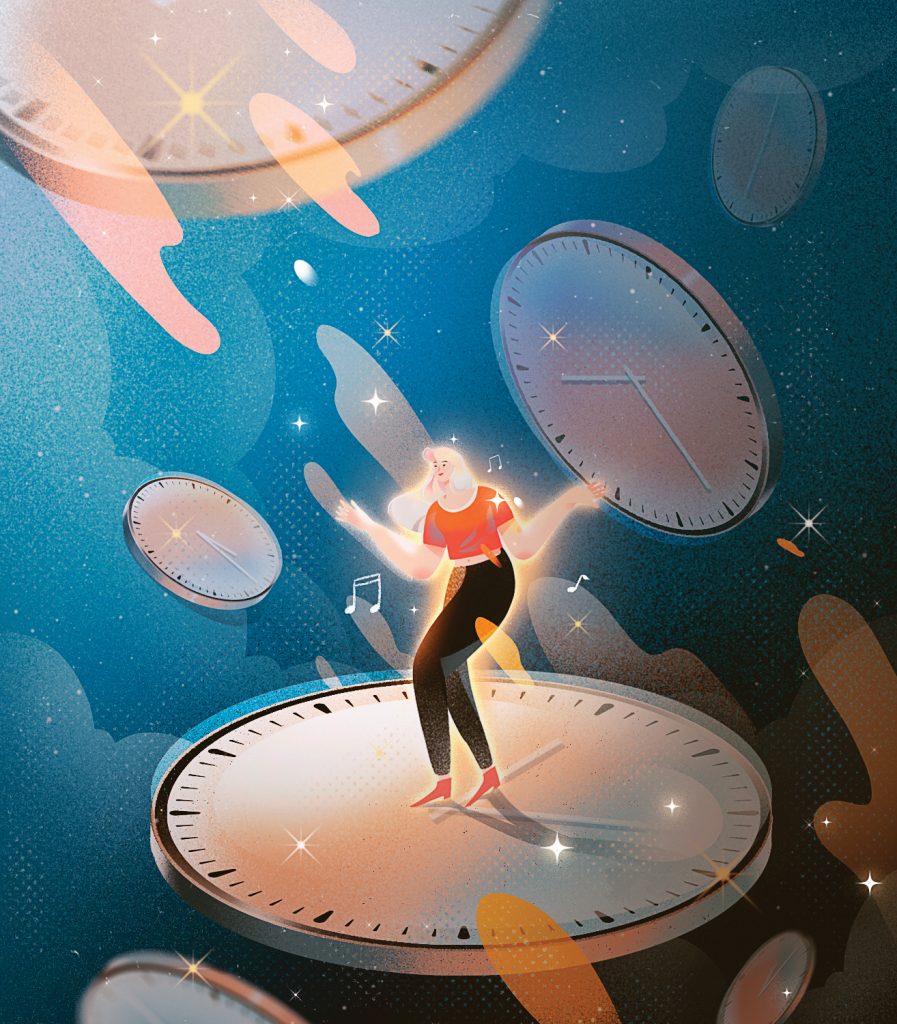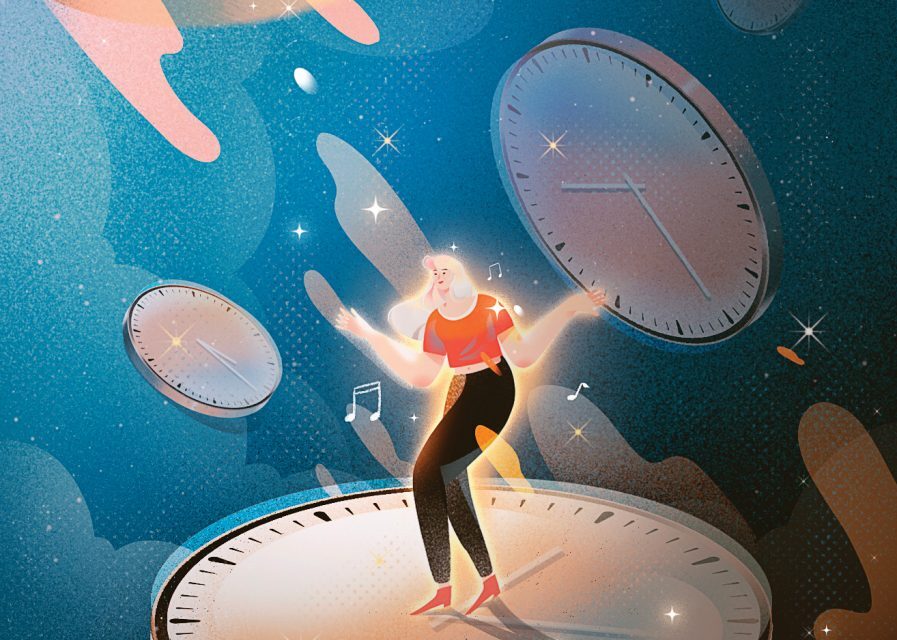
For years, I could not imagine succumbing to gray hair. It was fine for other people. You know, older people. For women of a certain age with gorgeous silver manes, like Helen Mirren and Donna Brazile. But not me.
I was a brown-haired girl, and other than that blonde phase in my twenties that’s what I would stay. Even when gray hair sprouted in wiry little strands in my thirties, it didn’t seem real. It was almost novel. Gray hair, how hilarious, I thought.
But by my forties, I wasn’t laughing anymore. My gray was becoming intractable, and I was spending hundreds of dollars a year at the salon and root touching at home constantly. Even during COVID, which was the ultimate permission for forsaking hair-coloring routines, I just root-touched at home more.
My sister, who is 10 years older than me, transitioned to gray a few years ago, and she looked great. Still, it seemed unthinkable to me. I had little kids. I was the baby of my family. I did pull-ups regularly. OK, not actual pull-ups, but push-ups. Lots of push-ups. I was too young, and as much as I was trying to embrace midlife, my dark hair felt like my last stand. I wasn’t ready.
I can do it when I’m 50. I’ll be ready then. This is what I told myself every time I looked in the mirror, yanked out a gray wisp at my temple, or bought another box of Clairol Nice’n Easy Root Touch-Up in Medium Golden Brown. Like driving at 16 or voting at 18 or drinking at 21, 50 was the age when permission would be granted. I wasn’t sure what would be different when I crossed the half-century mark, but I assumed it would be some general feeling of surrender. I’d pull up to the mirror, hum that Aimee Mann song about how it’s not going to stop so I should give up, and then do just that: Give up and gray up.
But even as I said it, I thought, I won’t be able to do it. I would look at the image on my phone screen saver, a selfie of my husband and me, my dark hair cascading effortlessly, and think about how sad I would surely feel to say goodbye to that brown-haired girl. Seven years older than me, my husband was already a hunky silver. But what would I be?
I spun around on the hamster wheel of hiding gray every eight weeks, then six weeks, then four weeks, until it seemed there were only about two good weeks before I spotted the dreaded root regrowth. But I couldn’t let go.
Until, one day, I could. That’s how we roll in this family. We get our kicks from sudden changes of heart. Like my 12-year-old daughter, who vowed she never ever wanted to go to sleepaway camp, right up until the evening she charged into the living room and said, “I want to go to sleepaway camp! Please sign me up right now!”
My moment came in January. I’d like to say I woke up New Year’s Day with a vision, but it actually happened in the car on the drive to my salon that first week. I was on Madison Road, waiting to turn left, and in the space of waiting for the green light, I thought, What if today was the day I did it?
I walked in and told Megan, who had been coloring my hair forever, “I think I’m ready to go gray.”
“Yeah, you are!” she said. She saw it in my eyes. “I kinda love this gray,” she said, her fingers combing through the strands around my temples.
“I do, too,” I said, and shockingly I (mostly) meant it. For the next few hours, she stripped out the color that had been added—so much color—to get closer to my natural color. Then she added some lowlights for the gray to blend better as it grew in more and more.
I repeated that same process in May—more lowlights, more blending—and if all goes as planned, I’ll do it at least one more time. And then nature is in charge. Nature has always been in charge. At age 48, two years before my target, I’m just giving up the fight against this particular enterprise.
What’s interesting is that the graying process doesn’t exactly feel like giving up. It doesn’t bring to mind Aimee Mann’s somber tones or a sad inevitability. It’s more of a Donna Summer song. And not “Last Dance.” More like “Hot Stuff.”
Women’s hair is emotionally and politically complicated. I recently read Mary Louise Kelly’s new book, It. Goes. So. Fast., an account of her efforts to slow down and appreciate her oldest son’s last year of high school as well as a general meditation on middle-age angst.
Kelly talks about her own consideration of going gray and realizes she isn’t ready yet. But she reflects on the fact that, for women in power or in the media—and definitely for women in Washington, D.C.—going gray can place too much negative attention on them and even make them seem less powerful (as opposed to men seeming more powerful as they grow more silver). Does Nancy Pelosi have even a spot of gray at 83? No, she does not. I’m guessing it’s simply more expedient for her, and for many women in the public eye, to avoid the conversation altogether.
Because it is often a conversation. A sideways look. A suggestion that something might be amiss. My 14-year-old son recently asked—out of nowhere, in the middle of a doctor’s office visit—“What’s up with your hair, Mom? Why is it a bunch of different colors?” He seemed genuinely bewildered. As a self-employed writer who’s worked mostly from home over the past 20 years, I don’t have coworkers. But I can imagine, if I did, the little glances I might get. I already steel myself for the momentary “Oh!” looks I’ll get from people who haven’t seen me for a while.
That said, little notice has been paid to my hair in the scheme of things, and I’m mostly unqualified to talk about what it really feels like to be judged for hair, given what Black women have historically had to navigate and still have to navigate. First, there is the general idiocy of people—mostly white people—about anything to do with textured hair. Black women also regularly face all manner of comments, unwelcome hands touching and tugging, and downright harassment and employment discrimination.
The point is: Hair is never just hair. Even as it’s a space for expression—what Cincinnatian doesn’t love Molly Wellmann’s fuchsia hair?—hair is layered with expectations. Gender, race, class, age, religion. You name the category, and there’s something going on when it comes to hair.
Several months and several inches of gray roots in, I’m glad to report that l mostly feel a sense of liberation. Of saying, “This is me. Here I am. Women are allowed to age. Got something to say about it? Go eff yourself.”
But I’d be lying if I said I didn’t miss my dark hair. If I said I didn’t look at pictures, even from a year ago, and notice the effect of gray hair on my face. How it feels like “before” and “after.” I worry that my hair looks like some giant mistake. Like I’m walking around in the world and just haven’t noticed what’s going on.
The other day, I was finishing up a long run. It was brutally hot, and I looked a fright—red face, sweat dripping, hair in a messy bun, strands of brown and blonde and gray matted to my head. An older man who lives in my neighborhood stopped me. He looks like Sam Elliot, so we’ll call him Sam Elliot. “I just wanted to tell you, I’ve been seeing you out here running for so long,” Sam said. “I see your transformation.”
I’ve been running for almost 30 years, so I don’t exactly know what transformation he was talking about. But I started doing weight training about a year ago, so maybe it was that. Or maybe it’s that this graying hair makes me suddenly look like I’m in incredible shape “for my age.”
Either way, it wasn’t creepy how he said it. It didn’t feel inappropriate, or male-gazey, or anything like the HR guy who used to stare openly at my breasts. It was more like, “I see you working so hard on these streets we share.” It made me feel seen.
Do I need Sam, or anyone, to see me? No, but it’s kind of nice. Because the real fear of gray hair is being invisible, isn’t it? A ghost of your former self, fading into the background. Like that Visage song, “Fade to Grey,” with its tinny new wave beat.
Except I’m an ’80s girl, and I can rock that song. Meet me on the dance floor, and we’ll show the young ones how to shine.





